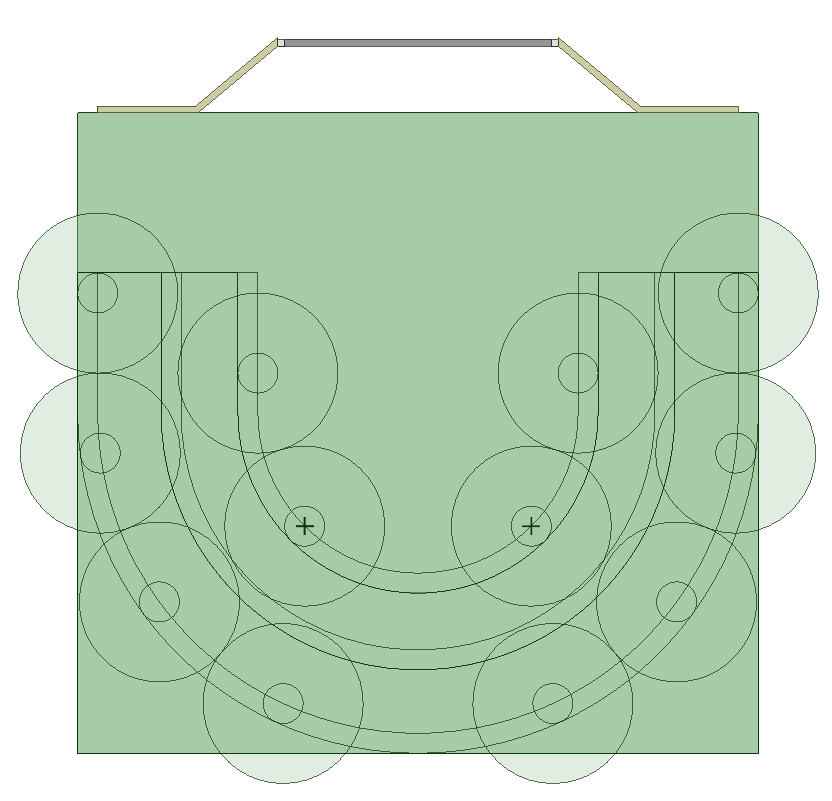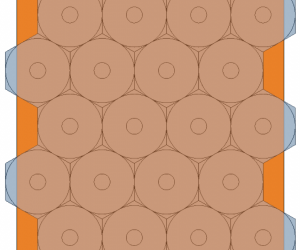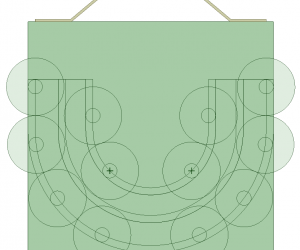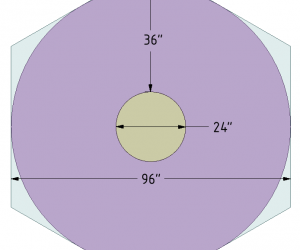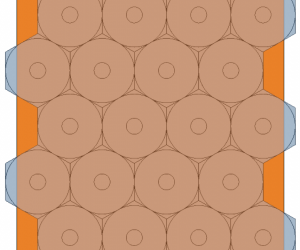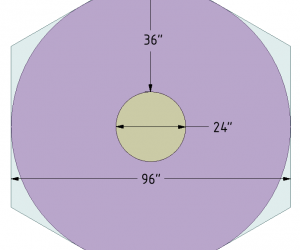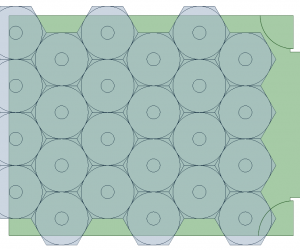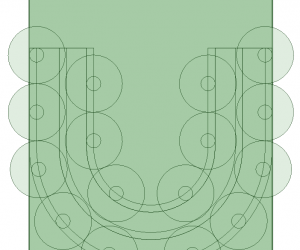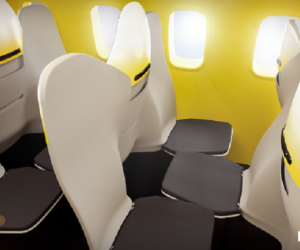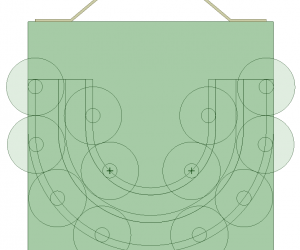
Horseshoe layout fits 12 students (in a space formerly for 52 seats)
Example of 2' diameter for a seated student and 3' additional space around that circle. This is a 1088 square foot room that we think can hold 12 students with a 6' social distance, but a third of those students can't exit without entering another students' bubble. This is generally a 52 seat space.
There isn't furniture for it, but we might be able to squeeze in a couple more students up the center aisle, but that makes the entrance/exit issue even worse.
In this model, each seated student needs roughly 64 square feet of space.
